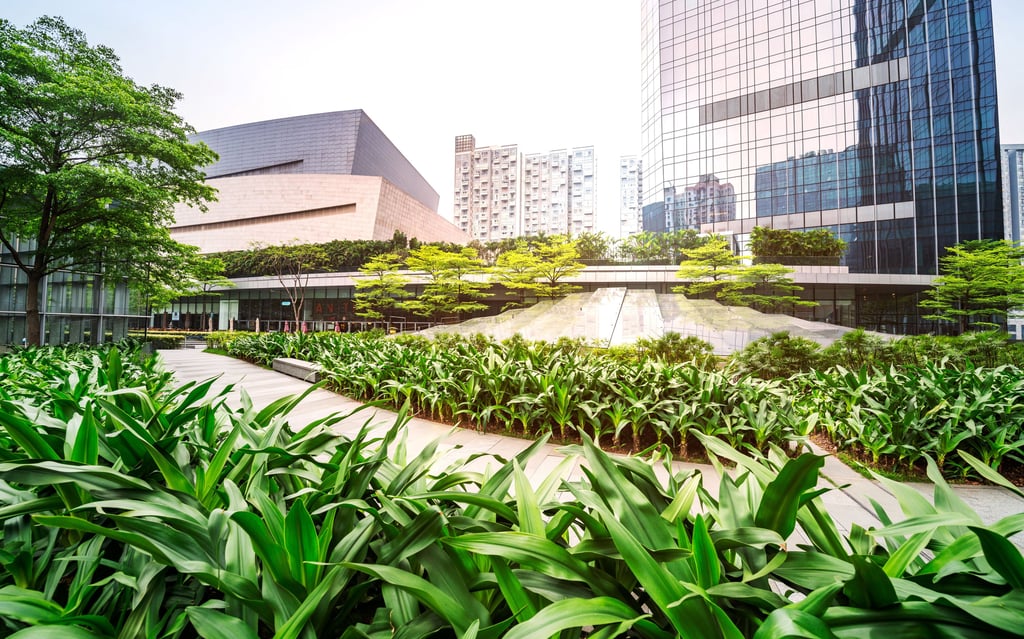Urban Gardening: How Cities are Embracing Green Spaces
LIFESTYLE
9/30/20245 min read


The Importance of Green Spaces in Urban Environments
Green spaces are increasingly recognized as vital components of urban environments, providing numerous benefits that enhance the quality of life for city dwellers. Access to parks, gardens, and natural areas has a profound impact on mental health, fostering a sense of well-being and reducing stress levels. Research has demonstrated that spending time in these green spaces can lead to improvements in mood and cognitive function, ultimately benefiting urban residents' mental health.
Furthermore, green spaces play a crucial role in community building. They serve as gathering places where diverse groups can come together, promoting social interactions and fostering a sense of belonging. Urban parks and community gardens encourage participation in local events and activities, strengthening neighborhood ties. This engagement helps cultivate a feeling of community solidarity, which is essential for urban resilience in the face of social challenges.
In addition to improving mental well-being and community cohesion, green spaces contribute to environmental sustainability. They are important for reducing urban heat, mitigating pollution, and improving air quality. Vegetation filters pollutants from the air and absorbs carbon dioxide, leading to a healthier urban environment. For example, cities such as New York have implemented initiatives to increase the number of green roofs, which help in cooling buildings and reducing energy consumption while also supporting biodiversity.
Moreover, urban green spaces enhance local biodiversity by providing vital habitats for various species. These areas can serve as corridors for wildlife, promoting ecological balance even within metropolitan settings. Cities are increasingly adopting policies that prioritize the creation and maintenance of green spaces, recognizing their essential role in fostering sustainable urban living.
In conclusion, the significance of green spaces in urban areas extends far beyond aesthetic value. They are crucial for promoting mental health, building community connections, and ensuring environmental sustainability, highlighting the imperative for cities to embrace and expand their green areas.
Innovative Urban Gardening Techniques
As cities continue to expand, innovative urban gardening techniques have emerged as vital solutions for incorporating green spaces into densely populated areas. One prominent method is vertical gardening, which involves growing plants in stacked layers, utilizing walls or specially designed frames. This technique maximizes limited space by transforming otherwise unused vertical surfaces into lush gardens, thus enhancing air quality and providing a habitat for various species.
Rooftop gardens are another effective urban gardening approach. By converting flat rooftop spaces into green oases, cities can help mitigate the urban heat island effect, reduce energy consumption, and manage stormwater runoff. These gardens can range from simple container gardens to elaborate landscaped areas, offering aesthetic and ecological benefits while providing a sanctuary for city dwellers. Organizations and homeowners alike are discovering new ways to employ roofs as productive spaces, fostering a sense of community and encouraging sustainable practices.
Community gardens have also gained popularity as a means for urban residents to come together and cultivate fresh produce. These gardens not only promote food security but also strengthen social bonds among neighborhood residents. By sharing resources, knowledge, and labor, participants in community gardens create a sense of ownership and pride in their environment. Many cities have embraced this technique by designating public land for community use, showcasing a commitment to sustainability and local engagement.
Hydroponic systems represent a groundbreaking shift in urban gardening. This soil-less growing technique utilizes nutrient-rich water solutions, allowing for cultivation in compact spaces or even indoors. Hydroponics can yield crops faster and with less water compared to traditional methods, making it an appealing option for urban centers where resource scarcity is an ongoing concern. Stores, schools, and households are beginning to implement hydroponic systems, demonstrating the versatility and efficiency of this innovative technique.
Across the globe, numerous cities have successfully adopted these gardening techniques, providing exceptional examples for others to follow. By embracing vertical gardening, rooftop spaces, community initiatives, and hydroponics, cities can create vibrant green landscapes that enhance urban living and promote sustainability.
Community Involvement and Educational Programs
Community involvement stands at the forefront of urban gardening initiatives, fostering a collaborative environment where local organizations, residents, and educational institutions join forces to create and sustain green spaces. These endeavors not only enhance the aesthetic appeal of urban landscapes but also contribute to environmental sustainability and community well-being. Local nonprofits and grassroots organizations often spearhead these initiatives, relying heavily on the support and participation of volunteers. Residents are encouraged to actively engage in gardening projects through various events such as planting days, maintenance activities, and seasonal celebrations.
Moreover, educational programs play a pivotal role in equipping urban residents with the knowledge and skills necessary for successful gardening. Many cities have implemented workshops and training sessions aimed at teaching participants about gardening techniques, sustainable practices, and the nutritional benefits of growing their own food. These programs are often conducted in collaboration with schools, allowing students to participate in hands-on learning experiences. School garden projects not only provide students with practical gardening knowledge but also instill a sense of responsibility and environmental stewardship from an early age.
In addition to formal educational efforts, community events serve as platforms for sharing knowledge and resources. For instance, urban gardening festivals can showcase local produce, offer cooking demonstrations, and provide information on the benefits of organic gardening. Such gatherings create an opportunity for residents to connect with one another and learn from experienced gardeners. This exchange of insights fosters a deeper appreciation for local biodiversity and encourages sustainable living practices.
Through the combination of community involvement and educational programs, urban gardening initiatives can thrive, creating a vibrant green culture within cities. By promoting collaboration and knowledge sharing, these efforts empower residents to take ownership of their surroundings, leading to healthier, more sustainable urban environments.
Future Trends in Urban Gardening
The future of urban gardening is poised for significant transformation as cities increasingly recognize the value of green spaces. Emerging technologies and innovative practices are redefining how urban dwellers engage with gardening. One notable trend is the integration of smart gardening tools that utilize IoT (Internet of Things) capabilities. These tools can aid in monitoring plant health, soil conditions, and even automate watering schedules, making gardening more efficient and accessible for city residents.
Urban permaculture practices are also gaining traction, promoting sustainable agriculture within city limits. By implementing permaculture principles, urban gardeners can create self-sustaining ecosystems that minimize waste and maximize productivity. This approach not only enhances biodiversity but also encourages a community-centric model of food production. As cities continue to grapple with food security issues, urban gardening could play a pivotal role in ensuring access to fresh produce for all residents.
Nonetheless, cities face significant challenges in expanding green spaces. Limited land availability and the impacts of climate change complicate the integration of new gardens and green roofs within urban environments. Cities are often constrained by zoning laws and economic factors that prioritize development over green initiatives. However, potential solutions exist; for example, community-led initiatives that repurpose vacant lots into gardens, or policy changes that incentivize green infrastructure could facilitate the growth of urban gardening.
As we look ahead, it becomes critical for urban residents to advocate for and actively participate in the greening of their spaces. Whether through community gardens, green rooftops, or urban farms, individuals can help shape the future of their cities. The collective efforts to embrace urban gardening not only enhance the environment but also foster a sense of community, resilience, and sustainability that is vital in navigating the complexities of modern urban living.
